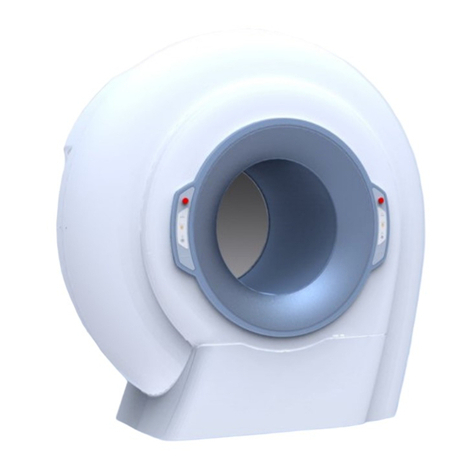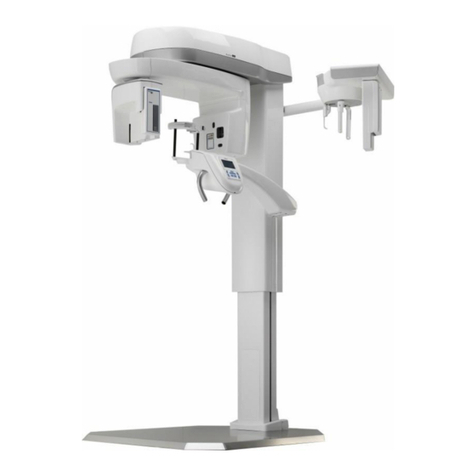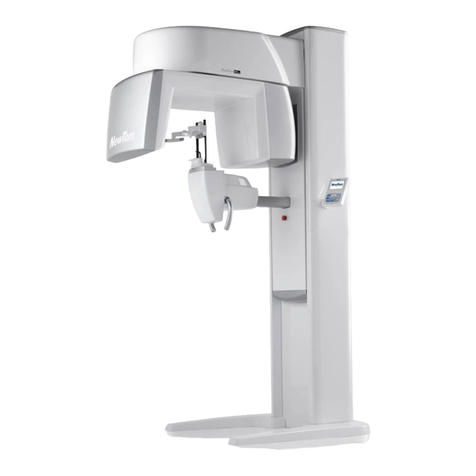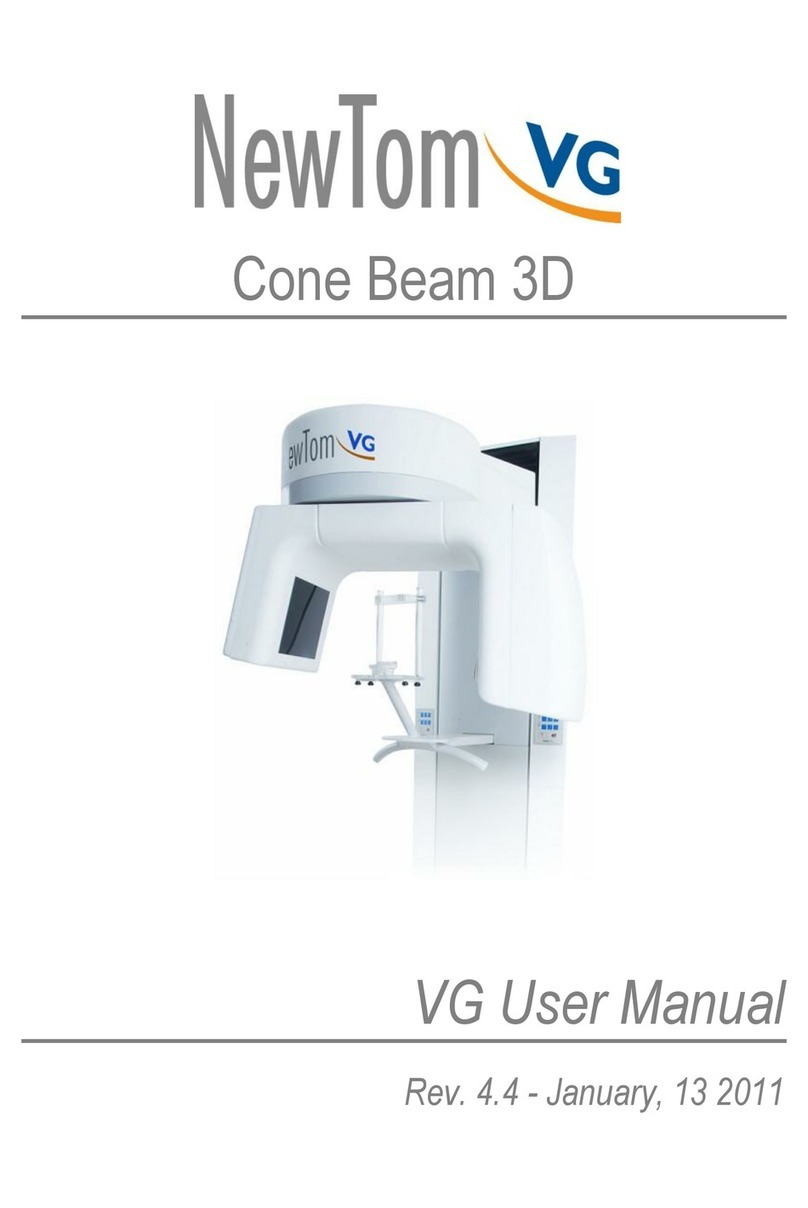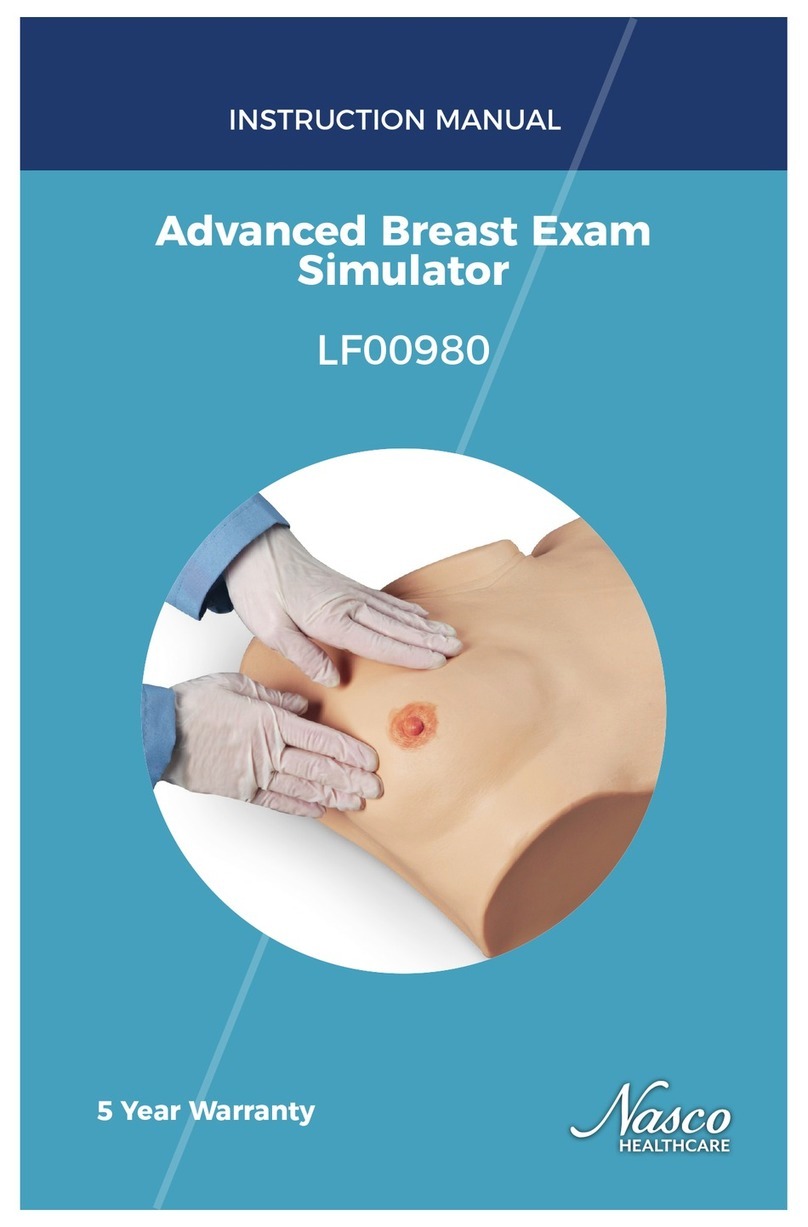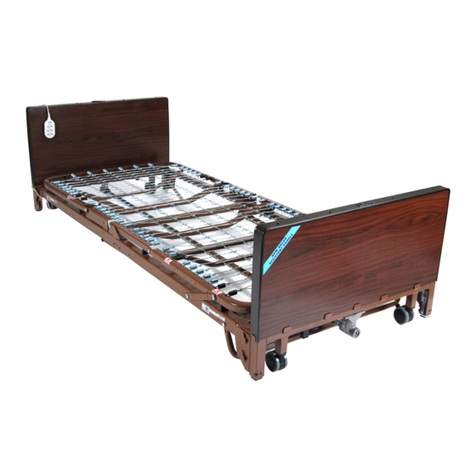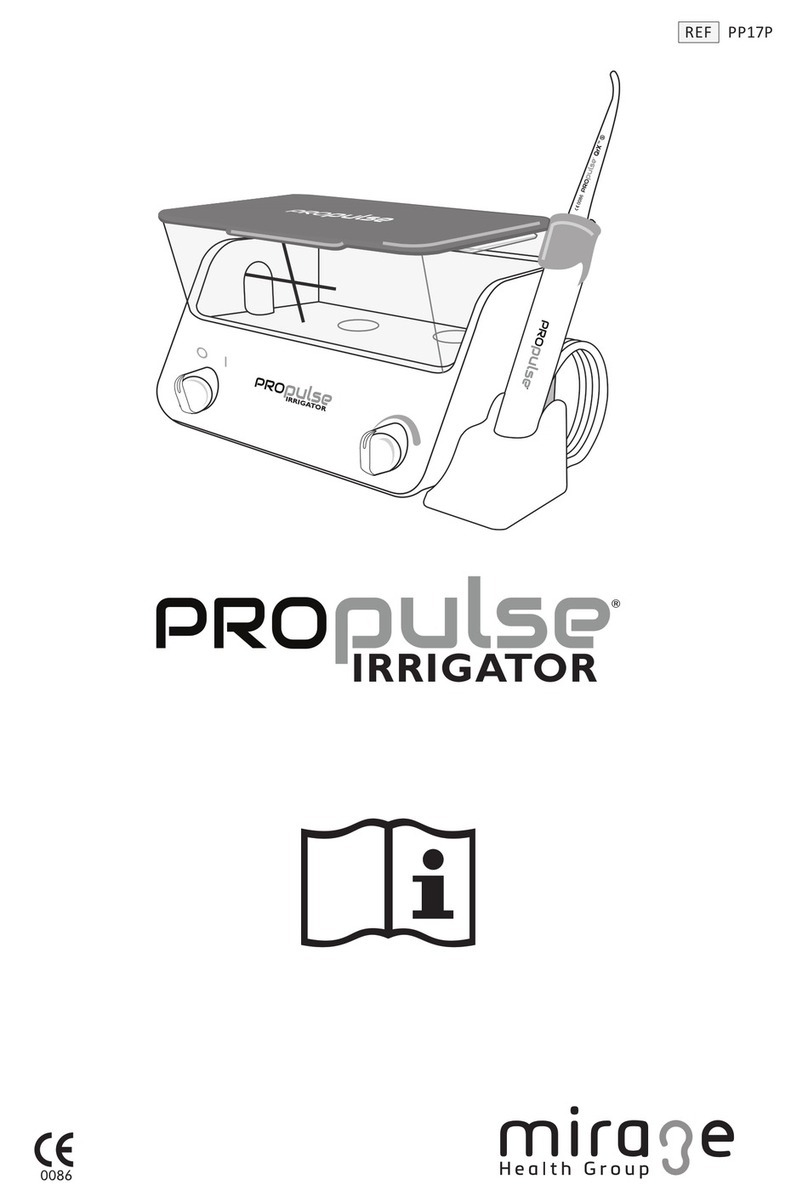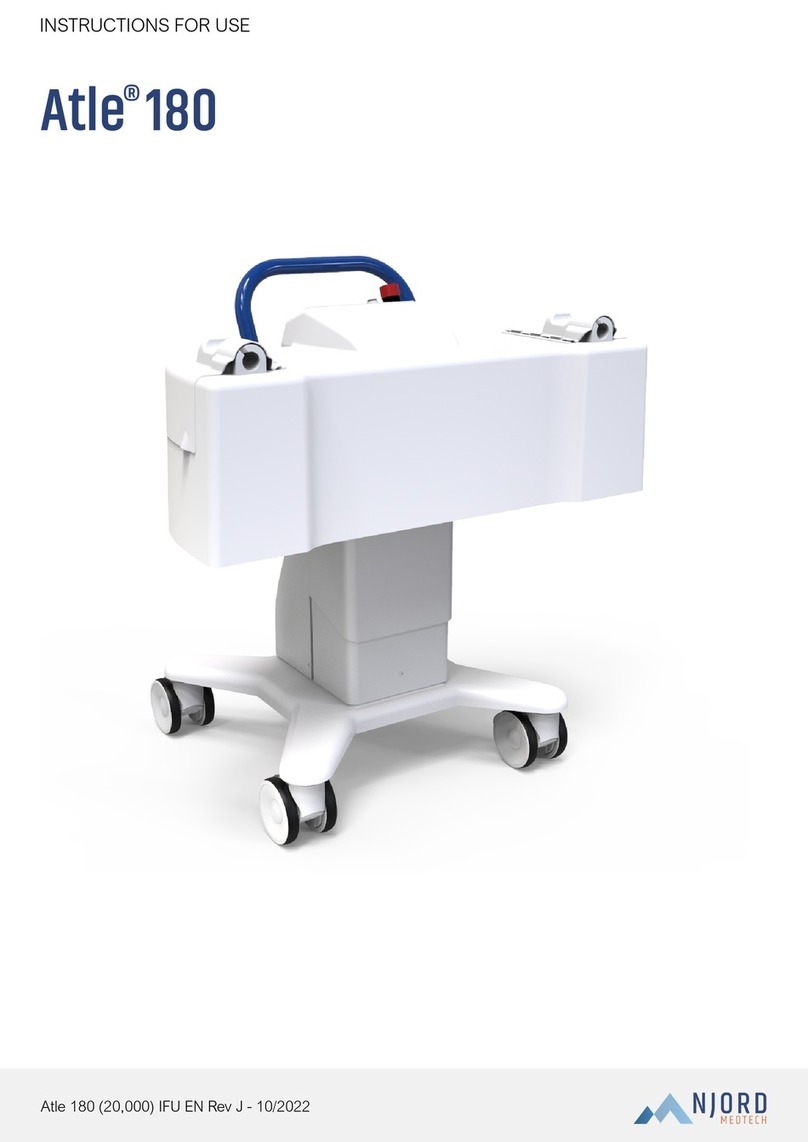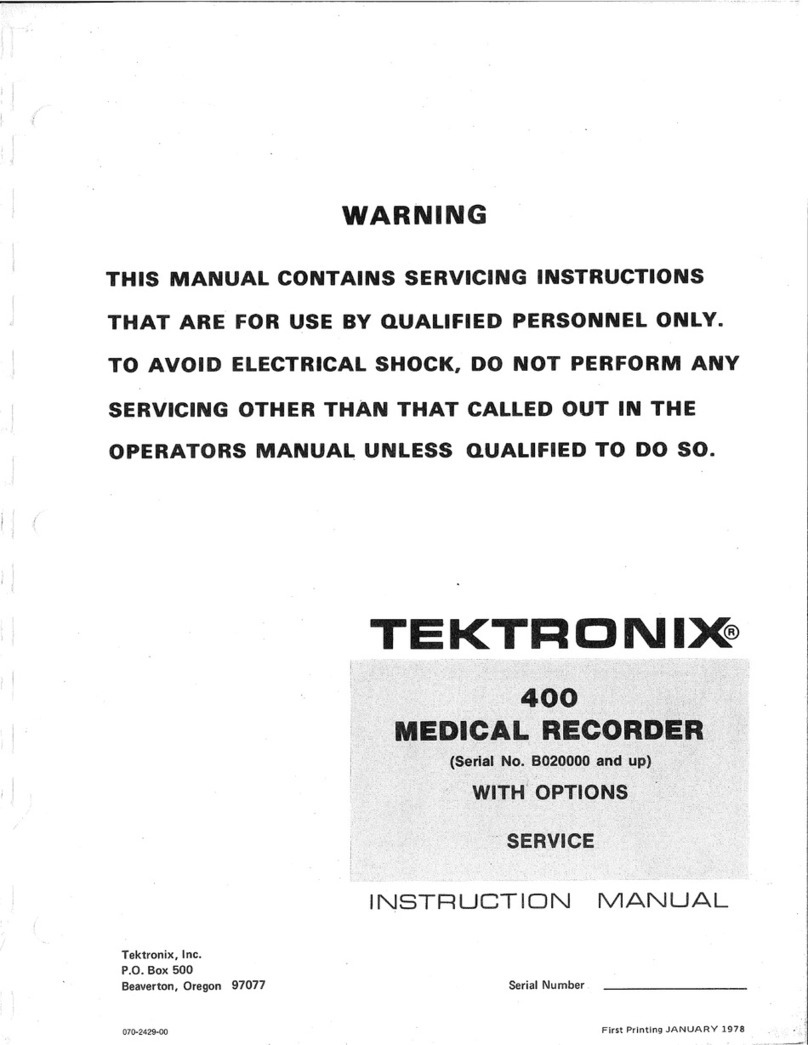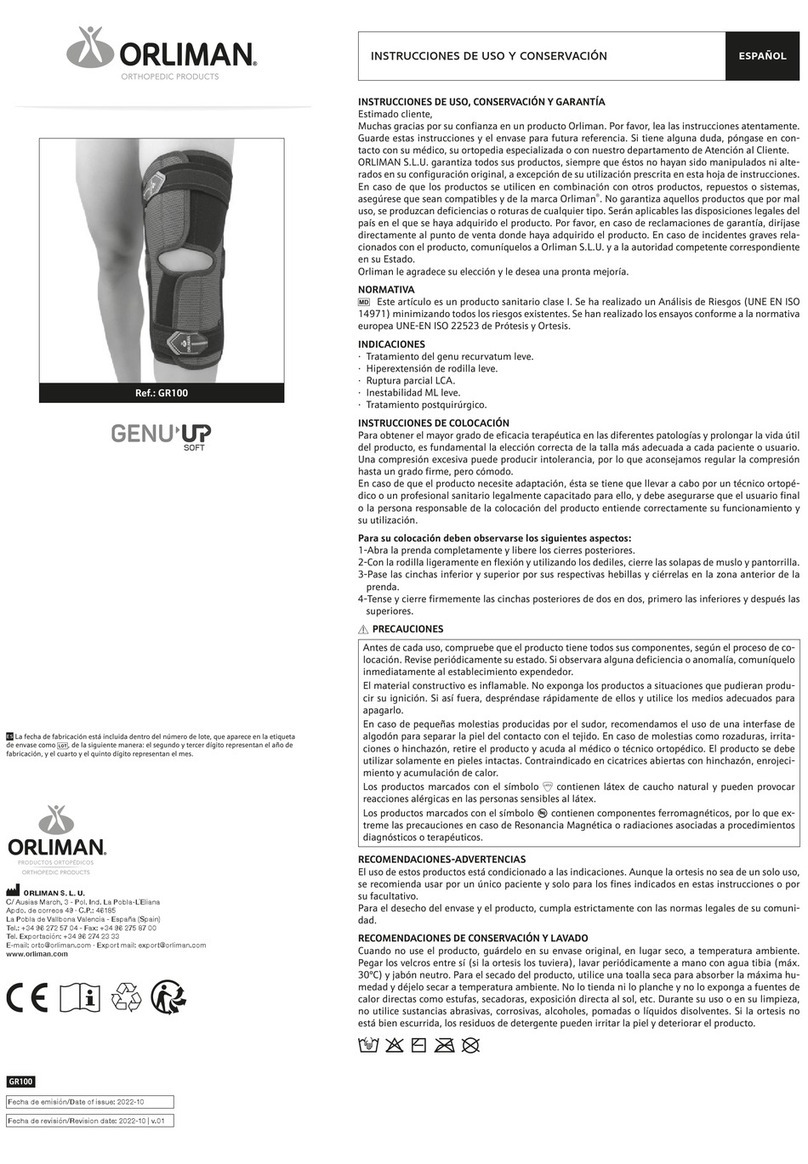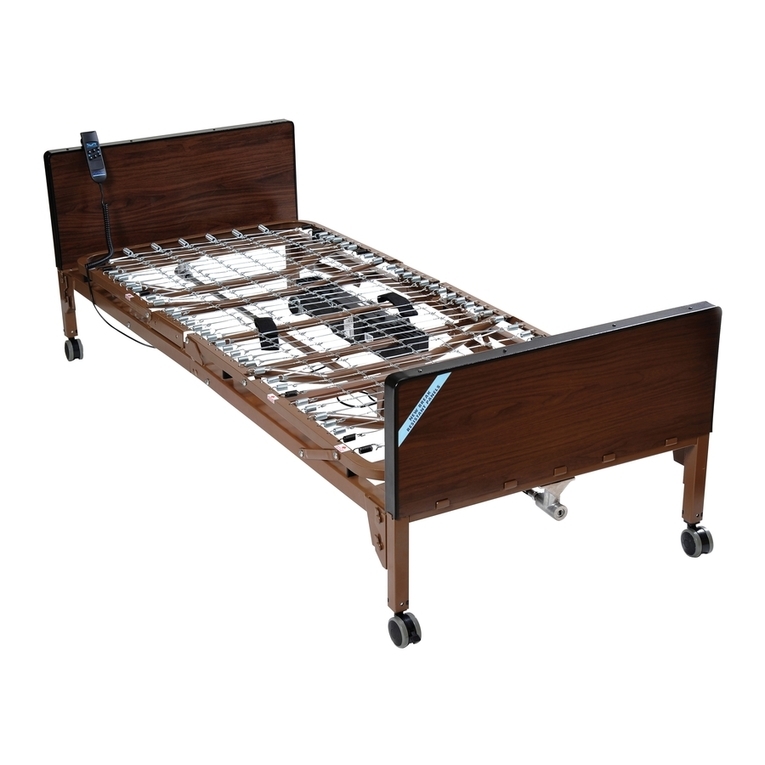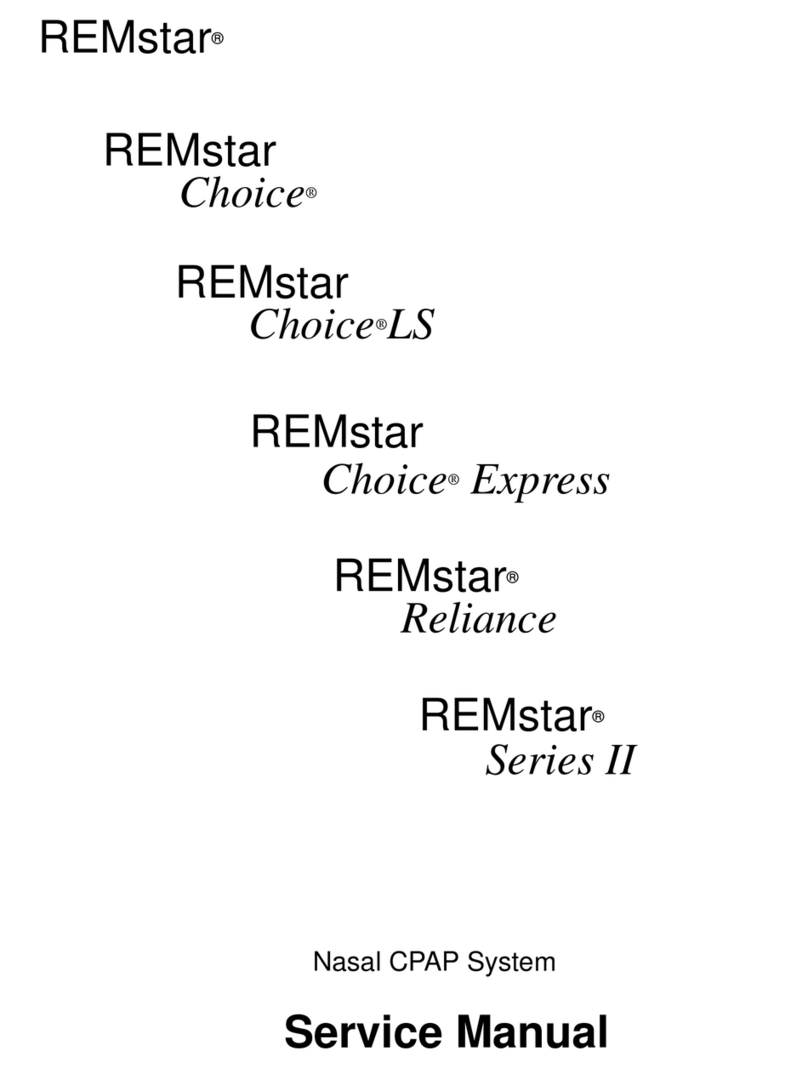NewTom GiANO HR User manual

97050977
Rev. 02
2018-11
NewTom GiANO HR
EN

2
OPERATOR'S MANUAL
EN
ITALIANO

EN
OPERATOR'S MANUAL
3
Contents
1. INTRODUCTION AND INDICATIONS FOR USE .....................................................................................................6
1.1. DESCRIPTION OF THE MANUAL.......................................................................................................................7
1.2. GENERAL WARNINGS........................................................................................................................................8
1.3. REQUIREMENTS (NOT PROVIDED WITH THE PRODUCT) ............................................................................9
1.4. STANDARDS AND REGULATIONS ....................................................................................................................9
1.5. CLASSIFICATIONS..............................................................................................................................................9
1.6. STYLISTIC CONVENTIONS ..............................................................................................................................10
1.7. GENERAL SAFETY WARNINGS.......................................................................................................................11
1.7.1. INSTALLATION CONDITIONS ...................................................................................................................11
1.7.2. CONDITIONS OF USE ...............................................................................................................................12
1.7.3. WARRANTY................................................................................................................................................12
1.7.4. MAINTENANCE AND DISPOSAL ..............................................................................................................13
1.7.5. CLEANING AND DISINFECTION...............................................................................................................14
1.7.6. HYGIENE PROCEDURES FOR PATIENT PROTECTION ........................................................................15
1.8. SAFETY WARNINGS.........................................................................................................................................15
1.8.1. CONDITIONS OF USE ...............................................................................................................................15
1.8.2. GENERAL SAFETY ....................................................................................................................................15
1.8.3. SAFETY DURING MOVEMENTS OF THE DEVICE ..................................................................................16
1.8.4. EMERGENCY BUTTON .............................................................................................................................17
1.8.5. CONDENSATE FORMATION.....................................................................................................................17
1.8.6. ELECTROSTATIC DISCHARGE ................................................................................................................17
1.8.7. EXPOSURE TO LASER RADIATION.........................................................................................................18
1.8.8. ELECTROMAGNETIC SAFETY .................................................................................................................18
1.8.9. PROTECTION AGAINST RADIATION .......................................................................................................21
1.8.10. APPLIED PARTS...................................................................................................................................21
1.8.11. CONSIDERATIONS FOR PEDIATRIC USE .........................................................................................22
2. DESCRIPTION OF OPERATION............................................................................................................................24
3. MAIN COMPONENTS.............................................................................................................................................25
4. CONTROL PANEL ..................................................................................................................................................27
4.1. CONTROL PANEL ONBOARD THE MACHINE ................................................................................................27
4.2. CONTROL CONSOLE .......................................................................................................................................28
4.3. PUSHBUTTON PANEL ON TELE-X-RAY ARM ................................................................................................28
4.4. X-RAY EMISSION REMOTE CONTROL...........................................................................................................28
4.5. PERFORM A SIMULATION (DUMMY RUN) .....................................................................................................30
4.6. PARKING POSITION .........................................................................................................................................30
5. PERFORMING A 2D X-RAY EXAMINATION .........................................................................................................31
5.1. STARTING THE SYSTEM .................................................................................................................................31
5.2. SELECTING THE EXAMINATION FROM THE CONTROL CONSOLE............................................................32
5.2.1. 2D EXAMINATIONS AVAILABLE ...............................................................................................................32
5.2.2. SELECTING AN EXAMINATION ................................................................................................................36
5.2.3. SETTING AN EXAMINATION FOR CHILDREN.........................................................................................36
5.2.4. SETTING A CURRENT EXAMINATION AS FAVOURITE .........................................................................37
5.2.5. CHOOSING PROJECTION TYPE - PAN Category....................................................................................37
5.2.6. CHOOSING PROJECTION TYPE - CEPH Category .................................................................................38
5.2.7. SELECTING A REDUCED ANATOMIC REGION ......................................................................................38
5.2.8. EXAMINATION SETTINGS.........................................................................................................................39
5.2.9. EXAMINATION START CONFIRMATION..................................................................................................40
5.3. PREPARATION OF THE EXAMINATION..........................................................................................................40
5.3.1. DEVICES FOR PATIENT POSITIONING ...................................................................................................41
5.3.2. SENSOR POSITIONING.............................................................................................................................42
5.3.3. EDENTOLOUS PATIENTS DEVICES ........................................................................................................44
5.4. PATIENT POSITIONING....................................................................................................................................45
5.4.1. LASER TRACES .........................................................................................................................................45
5.4.2. PATIENT POSITIONING DESCRIPTION (CRANIOSTAT) ........................................................................46
5.4.3. CRANIOSTAT MOTOR-DRIVEN SUPPORT .............................................................................................47
5.4.4. PAN, DENT AND SIN EXAMINATIONS .....................................................................................................48
5.4.5. TMJ EXAMINATION....................................................................................................................................50
5.4.5.1. LATERAL TMJ ...................................................................................................................................50
5.4.5.2. FRONTAL TMJ ..................................................................................................................................51

4
OPERATOR'S MANUAL
EN
5.4.6. MAXILLARY SINUSES EXAMINATION......................................................................................................52
5.4.7. TELERADIOGRAPHIC (CEPH) EXAMINATIONS......................................................................................53
5.5. ACQUISITION OF THE EXAM ...........................................................................................................................54
5.6. VIEWING AND SAVING .....................................................................................................................................55
6. 3D TOMOGRAPHY (CBCT) ....................................................................................................................................56
6.1. STARTING THE SYSTEM..................................................................................................................................56
6.2. SELECTING THE EXAMINATION FROM THE CONTROL CONSOLE ............................................................57
6.2.1. 3D EXAMINATIONS AVAILABLE ...............................................................................................................57
6.2.2. SELECTION OF THE AVAILABLE ANATOMICAL REGIONS FOR 3D EXAMINATIONS ........................58
6.2.3. EXAMINATION SETTINGS.........................................................................................................................59
6.2.4. EXAMINATION START CONFIRMATION ..................................................................................................60
6.3. PREPARATION OF THE EXAMINATION..........................................................................................................60
6.3.1. DEVICES FOR PATIENT POSITIONING ...................................................................................................61
6.3.2. EDENTOLOUS PATIENTS DEVICES ........................................................................................................62
6.4. POSITIONING THE PATIENT FOR 3D EXAMINATIONS .................................................................................63
6.5. PERFORMING THE EXAMINATION .................................................................................................................64
6.6. VIEWING AND SAVING .....................................................................................................................................65
7. PERIODIC CHECKS AND MAINTENANCE ...........................................................................................................66
7.1. PERIODIC INSPECTIONS TO CHECK THE IMAGE ........................................................................................66
7.2. TYPICAL IMAGES OF THE EXAMS ..................................................................................................................67
7.2.1. ADULT PANORAMIC IMAGING .................................................................................................................67
7.2.2. CHILD PANORAMIC IMAGING ..................................................................................................................67
7.2.3. TMJ EXAMINATIONS (TEMPOROMANDIBULAR JOINT) ........................................................................67
7.2.3.1. LATERAL VIEW OF BOTH CONDYLES (2 IMAGES) ......................................................................67
7.2.3.2. LATERAL VIEW OF A SINGLE CONDYLE (3 IMAGES) ..................................................................68
7.2.3.3. FRONT VIEW OF BOTH CONDYLES (2 IMAGES) ..........................................................................68
7.2.3.4. FRONT VIEW OF A SINGLE CONDYLE (3 IMAGES)......................................................................68
7.2.4. SIN EXAMINATIONS ..................................................................................................................................69
7.2.4.1. FRONT VIEW.....................................................................................................................................69
7.2.4.2. LATERAL VIEW .................................................................................................................................69
7.2.5. BITEWING EXAMINATIONS ......................................................................................................................69
7.2.6. DENTITION EXAMINATIONS.....................................................................................................................70
7.2.7. CEPH EXAMINATIONS ..............................................................................................................................70
7.2.7.1. CEPH AP-PA .....................................................................................................................................70
7.2.7.2. CEPH LATERAL ................................................................................................................................71
7.2.7.3. CEPH CARPUS .................................................................................................................................72
8. TECHNICAL DATA..................................................................................................................................................73
8.1. ELECTRICAL CHARACTERISTICS ..................................................................................................................73
8.2. RADIOLOGICAL CHARACTERISTICS..............................................................................................................73
8.3. DISPERSED RADIATION ..................................................................................................................................77
8.4. ISODOSE CURVES FOR CBCT EXAMINATIONS............................................................................................78
8.5. ISODOSE CURVES FOR PAN EXAMINATIONS ..............................................................................................78
8.6. CBCT DETECTOR FEATURES.........................................................................................................................79
8.7. 2D DEDICATED PANORAMIC SENSOR FEATURES (PAN) ...........................................................................79
8.8. TELE-X-RAY SENSOR FEATURES (CEPH).....................................................................................................79
8.9. LASER CHARACTERISTICS.............................................................................................................................79
8.10. DIMENSIONAL CHARACTERISTICS............................................................................................................80
8.11. ENVIRONMENT CHARACTERISTICS..........................................................................................................80
8.12. PC REQUIREMENTS.....................................................................................................................................80
8.13. IDENTIFICATION LABEL POSITION ............................................................................................................81
9. ERROR MESSAGES...............................................................................................................................................82
10. USER’S LICENCE CONTRACT..............................................................................................................................83
10.1. GENERAL CONDITIONS OF THE IMAGE SOFTWARE LICENCE .............................................................83
10.1.1. USER’S LICENCE .................................................................................................................................83
10.1.2. COPYRIGHT..........................................................................................................................................83
10.1.3. USE OF THE SOFTWARE PRODUCT AND EXPRESS TERMINATION CLAUSE .............................84
10.1.4. GUARANTEE AND EXCLUSIONS FROM THE GUARANTEE ............................................................84
10.1.5. LIMITS OF RESPONSIBILITY...............................................................................................................84
10.1.6. APPLICABLE LAWS, JURISDICTION AND COURT OF JURISDICTION............................................84
10.1.7. WRITTEN FORM ...................................................................................................................................84

EN
OPERATOR'S MANUAL
5
10.1.8. TRANSLATION......................................................................................................................................85
10.1.9. SOFTWARE COMPLIANCE WITH THE REGULATIONS IN FORCE ..................................................85
11. INSPECTION AND MAINTENANCE.......................................................................................................................86
11.1. USER INSPECTION ......................................................................................................................................86
11.2. TECHNICAL MAINTENANCE........................................................................................................................87

6
OPERATOR'S MANUAL
EN
1. INTRODUCTION AND INDICATIONS FOR USE
NewTom GiANO HR is an extraoral X-ray system for digital panoramic exams, tele-X-rays and tomographies,
intended to:
(I) produce orthopanoramic images of the maxillofacial region and carry out diagnostic examination on teeth, dental
arches and other structures in the oral cavity;
(II) produce X-ray images of dental arches, cranium parts, and carpus in support of cephalometric examinations, if
equipped with tele-X-ray arm (CEPH);
(III) produce tomographic images of the head, including ear, nose and throat (ENT), of dental and maxillofacial unit,
teeth, mandible and jaw, temporomandibular joint (TMJ), other areas of the human cranium and neck with sections of
the rachis for diagnostic use, if equipped with CBCT option.
The system performs tomographic exams with the acquisition of X-ray images through a rotating sequence and the
reconstruction of a three-dimensional matrix of the examined volume, thus producing two- and three-dimensional
views of the volume itself. This technique is known as CBCT.
NewTom GiANO HR is a digital X-ray device, suitable for expert professionals, which allows to obtain dental images
in a simple and automatic way. The image is acquired by means of an X-ray detector and a constant potential X-ray
source, powered by a high-voltage and high-frequency generator. Then the image is sent to a computer in real time
for further processing.
NewTom GiANO HR allows the following projections:
- standard or panoramic views for paediatric patients (PAN);
- complete or partial views of the teeth, selected by the user (DENT);
- front and side views of maxillary sinuses (SIN);
- side and posteroanterior views of the temporomandibular joints (TMJ), from different angles.
If equipped with tele-X-ray arm (CEPH), NewTom GiANO HR allows the following projections:
- cephalographies in latero-lateral view, in different formats;
- cephalographies in anteroposterior and posteroanterior view;
- hand (carpus) X-ray.
If equipped with CBCT option, NewTom GiANO HR also allows to acquire tomographic images.
NewTom GiANO HR is intended for use in the following fields:
- endodontics;
- periodontology;
- dental prosthesis;
- functional diagnosis and therapy of craniomandibular dysfunctions;
- dental surgery;
- dental implants;
- maxillofacial surgery;
- orthodontics.
- otorhinolaryngology.
Do not use on patients (children) less than approximately 104 cm in height and less than 19 kg in weight.
These height and weight measurements approximately correspond to that of an average 4 year old.
Use of equipment and exposure settings designed for adults of average size can result in excessive
radiation exposure for a smaller patient. Studies have shown that pediatric patients may be more
radiosensitive than adults (i.e., the cancer risk per unit dose of ionizing radiation is higher), and so
unnecessary radiation exposure is of particular concern for pediatric patients.
Not for use with patients not vigilant and cooperative, since the patient must be able to understand and
follow the operator's instructions for a correct positioning.

EN
OPERATOR'S MANUAL
7
Contraindications:
-Use in anatomic regions that are not within the scope of the device intended use (e.g., chest and
abdomen);
-Use for the visualisation of cartilaginous structures;
-Use of the CBCT technique for studying cerebral soft tissues;
-Use by staff that have not received training on the device;
-Use in the operating theatre;
-Use in mobile installations;
-Use in environmental conditions other than the indicated ones;
USA federal law restricts this device to sale by or on the order of a licensed healthcare practitioner.
The manufacturer’s website contains a list of authorised agents.
For users within the Russian Federation, refer to:
Zenith R.S. LLC
Bldg 3, Property 15, Gorodok-17 Str., Bolshie Vyazemy Settlement, Odintsovo District
143051 Moscow Region, Russia
phone: +7 (495) 980-13-50
+7 (495) 787-68-36
e-mail: sales@zenith-rs.ru
Website: www.zenith-rs.ru
For technical service, it is possible to contact the local distributor.
1.1. DESCRIPTION OF THE MANUAL
This manual is an essential consultation tool and contains important information and instructions for the use
of the X-ray system and its relevant controls.
These instructions describe how to properly and safely use the digital X-ray system.
Carefully read and familiarise yourself with the entire contents of the manual before attempting to use the
system.
To use the software, refer to the specific manual.
The manual is provided in electronic format and can be consulted directly on the PC screen during use.
A paper copy can be requested by contacting the technical service department.
It is advisable to print a copy of this manual and keep it within reach with the aim of training the operators
and as guide for consultation during the use of the device. This manual also contains all the essential
information for the safety of patient, operator and device.
It is therefore advisable to read carefully the paragraphs on the safety rules.
The original text is in Italian; this is a translation from the original in Italian.

8
OPERATOR'S MANUAL
EN
1.2. GENERAL WARNINGS
The digital X-ray system with its drivers and software have been developed and manufactured by CEFLA s.c. - Via
Selice Prov.le 23/A 40026 Imola (Italia), hereinafter referred to as the Manufacturer, in compliance with the EC
Medical Devices Directive.
In order to use the system, when it includes also the optional tomography function, the user must have a Personal
Computer with a suitable software for capturing and saving images; further information about its installation and use
is included in the Software user manual. If the system is used for the acquisition of X-ray and cephalometric images
only, a Personal Computer can be used but is not essential. Carefully read this manual and the Computer and
Software manuals before using the equipment.
- The contents of this publication are valuable trade secrets and must not be given to third parties, stored, copied,
reproduced, disclosed or transferred in any manner (via computer, photocopies, translations or other means)
without the prior written consent of the Manufacturer.
- The Manufacturer pursues a policy of continual improvement of its products; therefore, some specific instructions
and images contained in this manual may differ from the product purchased.
- The Manufacturer reserves the right to make changes without prior notice.
- The information, technical specifications and illustrations contained in this publication are not binding. The
Manufacturer reserves the right to make technical modifications and improvements without modifying these
instructions.
- All the registered trademarks and the product names mentioned are the property of the respective owners.
- Carefully read the USER LICENSE AGREEMENT before using the product. When the program is installed,
acceptance of the contract will be explicitly requested. If the contract is not accepted the program cannot be
installed.
Please pay particular attention to the sections in the manual where the following symbols appear:
Patient or operator safety-related warnings.
Important information on product use.
3D
For 3D machines only.
In accordance with the privacy laws in force in several countries, all sensitive personal information must be
adequately protected. In addition, patients must sign a consent form before any personal information or
images are transmitted across networks. If required by the laws in force, dentists are obliged to protect data
using a protection password. Refer to the Microsoft® Windows operating system manual for data access
protection methods by means of password.
It is recommended to regularly (at least once a week) make a backup copy of the databases. This will allow
restoring the data in the event of damage to the hard disc of the PC or the databases themselves.

EN
OPERATOR'S MANUAL
9
1.3. REQUIREMENTS (NOT PROVIDED WITH THE PRODUCT)
For proper functioning, the device requires connection to a personal computer (PC) and the relative software. For the
minimum requirements of the PC, refer to the paragraph TECHNICAL DATA.
The PC is not included with the device. It is recommended to only use a PC compliant to the IEC 60950-
1:2007 standards for information technology devices.
1.4. STANDARDS AND REGULATIONS
The system has been designed to meet the following standards:
- Directive 93/42/EEC and subsequent amendments and additions
(dir. 2007/47/EC) - Medical Devices Directive;
- Directive 2006/42/EEC - Machinery Directive.
Technical Standards:
IEC 60601-1:2005 + A1:2012
IEC 60601-1-2:2014
IEC 60601-1-3:2008 + A1:2013
IEC 60601-2-63:2012 + A1:2017
IEC 60601-1-6:2010 + A1:2013
IEC 62366:2007 + A1:2014
IEC 62304:2006
IEC 60825-1:2014
1.5. CLASSIFICATIONS
The system is classified as Class I and Type B as regards safety according to IEC 60601-1.
The system is classified as a Class IIB medical electrical X-ray device in accordance with Medical Device Directive
93/42/EEC and subsequent amendments.

10
OPERATOR'S MANUAL
EN
1.6. STYLISTIC CONVENTIONS
The following symbols may be found on the device and in the manual:
Manufacturer.
Date of manufacture.
SN
Product serial number.
Symbol “Possible hazard: Read the user manual”.
Patient or operator safety-related warnings.
Consult the enclosed documentation before using the relevant part of the equipment.
It is necessary to read the user's manual before using the device.
This symbol in the manual identifies the paragraphs containing important information on the use of
the product.
Applied part of type B, according to IEC 60601-1.
Equipment compliant with directive 93/42/EEC as amended.
Notified body: IMQ spa.
Ionizing radiation warning symbol.
Class 1 LASER radiation warning symbol.
Crushing hazard.
Disposal symbol in accordance with Directive 2012/19/EU.
POWER
Power switch.
REF TYPE
Product/equipment identification code.
I
Unit ON.
O
Unit OFF.
Ukraine compliance mark.

EN
OPERATOR'S MANUAL
11
1.7. GENERAL SAFETY WARNINGS
These instructions describe how to use the system correctly. Please carefully read this manual before using
the device.
The owner or the installation site manager is obliged to verify compliance with the local regulations in force and/or
ask a Qualified Expert for advice. Pay particular attention to fulfilling the obligations of the law regarding the
protection of workers, the population and patients against radiation.
The main REFERENCE STANDARDS are listed in this manual (1.4 - Standards and Regulations).
Do not use the system for uses different from those described in the indications for use (Introduction) and do not use
it if you do not have the necessary knowledge in the dentistry and radiological field.
The law restricts and reserves the sale and use of this device exclusively to physicians, dentists or radiology
specialists.
Only for US market: Federal Law restricts this device to sale by or on the order of a dentist/physician.
1.7.1. INSTALLATION CONDITIONS
- The system must not be used if it shows any electrical, mechanical or radiation defect. Like for all medical
electrical systems, this device requires proper installation, use, maintenance and service with the aim of assuring
safe and efficient operation.
- The entire system must be installed by a technician authorised by the Manufacturer under supervision of a
Qualified Expert.
- The room where the system is installed must exclusively be for medical use and designed by an expert in
protection against the risks associated with exposure to radiation in accordance with the regulations in force in
the country of use.
- For Europe, the electric system in the room where the device is installed must comply with the IEC 60364-7-710
standards (requirements for electric systems in rooms used for medical purposes).
- The X-ray system requires special precautions with respect to electromagnetic compliance and must be installed
in accordance with the recommendations given in the paragraph “Electromagnetic safety” in this manual.
- The maximum dimensions reached while the unit is being installed must be taken into consideration to avoid
banging into any objects present in the room. Refer to the dimensional diagram in the service manual.
- Make sure that the operator can communicate verbally and visually with the patient during the examination.
- The system can be installed in the following configurations:
1. wall mounting;
2. on the floor surface with a static baseplate (optional).
- Installation not in compliance with the instructions provided by the Manufacturer might cause increased
electromagnetic emission of the X-ray system and reduce its immunity to disturbances.
- In particular, use a screened cable for connection of the X-ray remote control and make the connection as
specified in the technical manual.
For further details, refer to the installation template and the detailed instructions given in the service manual.

12
OPERATOR'S MANUAL
EN
1.7.2. CONDITIONS OF USE
The equipment may only be used by authorised and adequately trained staff (dentists and paramedics).
Use in compliance with national regulations for protection against ionising radiation, e.g.:
(a) Three-dimensional imaging must not be used for routine screening exams. Three-dimensional imaging
exams must be prescribed according to the patient's needs.
(b) Each exam must be justified by evidence that the benefits outweigh the risks.
(c) All patients must wear leaded aprons with thyroid collar.
(d) Before the exam, ask women of reproductive age if they are pregnant or if there is any possibility that
they might be. If there is, the patient should not undergo the exam, unless a radiologist from a trustworthy
hospital is consulted in order to evaluate, together with the patient and the operator, the benefits and the
risks associated with this procedure, taking into account the possibility of choosing a different kind of exam.
(e) The operator must keep a safe distance, protect him/herself with an adequate shielding and remain
close to the patient in the exam room only if the patient needs assistance. If the operator has to remain in
the exam room, he/she must wear a leaded apron with thyroid collar.
(f) Inform the patient about the risks associated with the exam, acquire his/her informed consent and archive
the document.
In case of claims or need of technical assistance, users in Brazil are required to contact the following email
Users in the USA market are required to contact:
Cefla North America Inc.,
6125 Harris Technology Blvd., Charlotte, NC, 28269 United States
1.7.3. WARRANTY
The Manufacturer guarantees the safety, reliability and performance of the device.
The warranty is valid only under the following terms:
-closely observe the conditions specified in the warranty certificate itself;
-the equipment is only to be used as instructed in this manual;
-equipment installation, upgrade and technical support must be performed exclusively by personnel
authorised by the Manufacturer to carry out these operations;
-do not open the device covers: installation, repairs and in general all the operations that require opening
the device must be carried out exclusively by technicians authorised by the Manufacturer;
-the equipment is to be installed in rooms that satisfy the requirements specified in the manual;
-the room where the X-ray unit is installed must be in compliance with the official directives that govern
radiation protection in the country of use.

EN
OPERATOR'S MANUAL
13
1.7.4. MAINTENANCE AND DISPOSAL
Never remove the device covers.
The device does not contain parts that can be repaired directly by the user. In the event of malfunctioning, do not
attempt to carry out any type of maintenance operation. If you find or suspect any kind of system malfunctioning, do
not attempt to carry out any type of maintenance operation and do not use the system on a patient, but directly
contact your local distributor.
The user may not carry out maintenance on any mechanical or electronic part of the x-ray system.
Opening the cases to access the internal circuits may cause device breakage and failure of the electrical safety
devices and will lead to forfeiture of the warranty.
Any maintenance, repairs and modifications of the device must be carried out only by personnel directly authorised
by the Manufacturer or by third parties expressly authorised by the Manufacturer and must be carried out according
to the laws in force and the generally accepted technical standards.
All the system components must be checked and replaced, if necessary, by qualified personnel.
For any maintenance operation, please contact the Manufacturer via the website indicated on the cover of this
manual by filling in the Information Request form.
Further information about the device regular inspection and maintenance is provided in the document “NewTom
GiANO HR - Inspection and Maintenance”.
Should you for any reason need to return the device or its parts to the Manufacturer or a Technical Service centre,
disinfect all the external parts of the device using a specific product (see the paragraph “Cleaning and disinfection”)
and preferably return it in its original packaging.
At the end of its lifetime, dispose of the device in accordance with the regulations in force. It is also advisable to
disinfect all the external parts of the device before disposal and to separate the materials for differentiated waste
collection.
In compliance with Directives 2011/65/EU and 2012/19/EU regarding restriction of the use of certain hazardous
substances in electrical and electronic equipment along with waste electrical and electronic equipment, it is forbidden
to dispose of this equipment in the municipal waste stream as unsorted municipal waste. When purchasing a new
device of an equivalent type, one for one, the device that has come to the end of its lifetime should be returned to the
distributor for disposal. As regards reuse, recycling and other forms of recovery of waste electrical and electronic
equipment, the Manufacturer carries out the functions defined by current local laws. Appropriate differentiated waste
collection for subsequent recycling treatment and environmentally friendly disposal contributes to preventing possible
negative effects on the environment and health and encourages recycling of the materials of which the device is
made up. The crossed-out bin symbol on the device indicates that the product must be collected separately from
other waste at the end of its useful life. Under local legislation, fines can be imposed if the equipment is disposed in
an illegal manner.

14
OPERATOR'S MANUAL
EN
1.7.5. CLEANING AND DISINFECTION
Cleaning is the first step necessary in any disinfection process. The physical action of rubbing a surface with
detergents and surface-active agents and rinsing with water removes a large number of microorganisms. If
a surface is not cleaned first, the disinfection process cannot be successful.
When a surface cannot be adequately cleaned, it should be protected with barriers.
The external parts of the device must be cleaned and disinfected using a product for hospital use with indications for
HIV, HBV and tuberculosis (medium-level disinfectant) specifically for small surfaces.
The various drugs and chemical products used in dentist’s surgeries may damage the painted surfaces and the
plastic parts. The tests and research conducted have demonstrated that the surfaces cannot be fully protected
against attack of all the products found on the market. It is therefore recommended to use barrier protections
whenever possible.
The aggressive effects of chemical products also depend on the time they stay in contact with the surfaces. It is
therefore important not to leave the product on the surfaces of the device for longer than the time indicated by the
manufacturer.
It is recommended to use the specific medium-level disinfectant, STER 1 PLUS (CEFLA S.C.), which is compatible
with the painted surfaces, plastic parts and unpainted metal surfaces. Alternatively, it is recommended to use
products that contain:
-96% ethanol Concentration: maximum 30 g for every 100 g of disinfectant.
-1-propanol (N-propanol, propyl alcohol, N-propyl alcohol). Concentration: maximum 20 g for every 100 g of
disinfectant.
-Combination of ethanol and propanol. Concentration: the combination of the two must be at maximum 40 g for
every 100 g of disinfectant.
-Painted surfaces and plastic parts.
- Incidin Spezial (Henkel Ecolab);
- Omnizid (Omnident);
- Plastisept (Alpro) (not tuberculocide as not an alcohol-based disinfectant);
- RelyOn Virkosept (DuPont);
- Green & Clean SK (Metasys) (not tuberculocide as not an alcohol-based disinfectant).
-Do not use products containing isopropyl alcohol (2-propanol, isopropanol).
-Do not use products containing sodium hypochlorite (bleach).
-Do not use products containing phenols.
-Whatever product you use, follow the instructions given by the manufacturer.
-Do not mix the STER 1 PLUS disinfectant with other products.
-Do not spray the product directly on the device surfaces.
For cleaning and disinfection use disposable, soft, non-abrasive
paper (do not use recycled paper) or sterile gauze.
- It is recommended to turn off the device before cleaning and
disinfecting the external parts.
- Everything used for cleaning and disinfection must be thrown
away after use.

EN
OPERATOR'S MANUAL
15
1.7.6. HYGIENE PROCEDURES FOR PATIENT PROTECTION
Disposable hygienic protections are the main protection means against cross contamination between
patients. In order to prevent the transmission of infectious diseases between patients, it is essential to
always use disposable protections. Disposable protections are class I medical equipment and cannot be
replaced with other protections having lower specifications.
Disposable protections must comply with standards ISO 10993-1 on biocompatibility and be approved by
control bodies where required (e.g. FDA, CE).
Always replace bite disposable hygienic protections before positioning a new patient.
Disposable hygienic protections must be stored in a dry and clean area and must not be exposed to direct
sunlight or UV radiation.
Bite and chin rest can be disinfected by soaking them in a cold sterilising liquid. For sterilisation of such
parts, follow the instructions provided by the sterilising product supplier.
Cover with disposable protections all components that will be in contact with dental personnel's hands and
might be contaminated by indirect contact with the mouth of the patient. In particular, pay attention while
handling equipment control console and relevant Touch Screen display, mouse and Personal Computer
keyboard.
Before positioning the patient for a radiological examination, always cover the bite with a new (non-sterile)
plastic protection in order to prevent cross contamination.
Note for users in Canada: ask your trusted dental material distributor for any plastic barrier that is suitable in
size and is marketed in Canada according to the local regulations in force.
In compliance with the provisions of Health Canada, bite protections are Class I equipment supplied by
authorised distributors as per MDEL database.
1.8. SAFETY WARNINGS
1.8.1. CONDITIONS OF USE
In order to use the device in safe conditions, refer to the following paragraphs in the manual.
1.8.2. GENERAL SAFETY
-Do not forget to turn off the main switch on the equipment before leaving the surgery.
-The device is not protected against liquid penetration (Class IPX0 –common protection).
-The equipment is not suitable for use in the presence of a mixture of flammable anaesthetic gas with oxygen or
nitrous oxide.
-Portable telecommunications devices (RF) may interfere with the X-ray device; use in the vicinity of the X-ray
device should therefore be prohibited.
-This equipment must be stored properly so that it is kept in top working order at all times.
-The user must be present at all times when the equipment is turned on or ready for start-up. In particular, never
leave the equipment unattended in the presence of children or other unauthorised personnel in general;
-The Manufacturer shall not be held responsible (under civil and criminal law) for misuse, carelessness or
improper use of the equipment.
-If any person who is not an authorised technician changes the product in any way by replacing parts or
components with other ones not used by the Manufacturer, they shall assume responsibility for the product.
-Any computer, monitor, printer, mouse, keyboard and any other device connected to the X-ray device must be
compliant with ISO, IEC, EN or local standards.
-The Manufacturer is not responsible for problems or malfunction of parts and/or components not approved by
itself, not complying with the regulations and not installed by qualified technical personnel acknowledged by the
Manufacturer.
-The X-ray tube contains insulating mineral oil. This oil is potentially hazardous if ingested or if it comes into
contact with the skin or mucous membranes. In the event of a defect or fault, the oil may leak out. Avoid direct
contact with the oil and do not inhale its vapours.

16
OPERATOR'S MANUAL
EN
-Do not eat, drink or smoke near the device.
Before using the device near life-support electronic equipment (i.e.: pacemakers or cardiac stimulators) and
hearing aids, see the instructions for use provided by the Manufacturers of such equipment.
1.8.3. SAFETY DURING MOVEMENTS OF THE DEVICE
The X-ray device carries out movements in the vicinity of the patient and the operator.
During the execution of the X-rays, the operator controls the movements by holding down dedicated
buttons.
The reset procedure must be carried out before the patient accesses the device.
The operator must stand at a suitable distance from the moving parts. Movements can be stopped at any
time by pressing the emergency button.
During all the movements of the X-ray device, the operator must:
-closely watch over the patient, and if there is a risk of collision between the X-ray device and the patient,
immediately interrupt the movement by releasing the control button;
-not allow the patient to assume incorrect positions (resting the hands or other parts of the body in inappropriate
areas) or to move away from the examination area.
The operator must be careful not to interfere with the sensor movement during its servo-controlled activation.

EN
OPERATOR'S MANUAL
17
1.8.4. EMERGENCY BUTTON
The system features an emergency stop button, placed under the patient’s support arm, near the telescopic column,
which stops the X-ray device operation. A remote emergency stop button can be connected using the dedicated
connection on the board located at the bottom of the lifting column.
1 - Emergency stop button
Such buttons must be pressed in case of danger and emergency, for example when the radiation is not interrupted
from the source in case of situations which are clearly dangerous for persons or when an emergency condition is
reported.
Pressing them will immediately stop the radiation emissions and any movement of the patient’s support and of the
rotary arm, making any linear motor cover a distance shorter than 10 mm and rotatory movements a distance shorter
then 2 degrees, while the button will remain safely locked.
Once the emergency has ended, turn the button in the direction indicated by the arrow to restore the normal
operation.
1.8.5. CONDENSATE FORMATION
Following strong temperature oscillations, condensate may form in the X-ray device. Activate the X-ray device only
after an adequate ambient temperature has been reached. See the chapter “Ambient characteristics”.
1.8.6. ELECTROSTATIC DISCHARGE
Electrostatic discharge (ESD).
Electrostatic discharge from persons may cause damage to the electronic components in the event of contact.
Generally, damaged components must be replaced. The repair must be carried out by qualified technicians.
Do not touch the parts at risk marked with the symbol .

18
OPERATOR'S MANUAL
EN
1.8.7. EXPOSURE TO LASER RADIATION
The system contains some Class 1 laser diodes in compliance with IEC 60825-1:2014. Three of them are positioned
on the X-ray generator and one on the chin support base.
Both the patient and the operator may be dazzled by laser traces.
-Do not look directly into the laser beam. Be careful that the laser beam does not hit the patient’s eye.
-Keep a distance of at least 10 cm between the eye and the laser.
The position of the laser sources is indicated with the following symbol .
1.8.8. ELECTROMAGNETIC SAFETY
The device is intended for use in environments recognised as professional health facilities, as described in IEC
60601-1-2:2014. The device belongs to CISPR 11 Class A Group 1 and complies with immunity test levels specified
by IEC 60601-1-2:2014 for professional health facilities.
Before using any electronic device in health facilities, always check that it is compatible with the other equipment
present.
Even if the device complies with standard IEC 60601-1-2, it is recommended not to use it near life-support
equipment (e.g.: pacemakers or cardiac stimulators). For further information, see the equipment instructions
for use.
Use of this equipment adjacent to or stacked with other equipment should be avoided, because it could
result in improper operation. If such use is necessary, this equipment and the other equipment should be
observed to verify that they are operating normally.
Use of accessories, transducers and cables other than those specified or provided by the manufacturer of
this equipment could result in increased electromagnetic emissions or decreased electromagnetic immunity
of this equipment and result in improper operation.
Portable RF communications equipment (including peripherals such as antenna cables and external
antennas) should be used no closer than 30 cm (12 inches) to any part of the device, including cables
specified by the manufacturer. Otherwise, degradation of the performance of this equipment could result.
Do not subject the device to strong electromagnetic disturbances. These disturbances could degrade the
essential performance of the device.
The emission characteristics of this equipment make it suitable for use in industrial areas and hospitals
(CISPR 11 class A). If it is used in a residential environment (for which CISPR 11 class B is normally
required) this equipment might not offer adequate protection to radio-frequency communication services.
The user might need to take mitigation measures, such as relocating or re-orienting the equipment.

EN
OPERATOR'S MANUAL
19
Guidance and Manufacturer's declaration - Electromagnetic emissions
The device is designed to operate in the specified electromagnetic environment. The customer or the user of the
device must ensure its use in an electromagnetic environment with the following features:
Emission test
Conformity
Electromagnetic Environment
RF emissions
CISPR 11
Group 1
The device uses RF energy only for its internal
operations.
For this, the RF emissions are very low and do not
interfere with the electronic devices nearby.
RF emissions
CISPR 11
Class A
The device must be used only by adequately trained
personnel (dentists and paramedics). The device may
cause radio interferences or disturb the operation of
the nearby equipment. It may be necessary to adopt
countermeasures, such as re-orienting or moving the
device or shielding the installation site.
Guidance and Manufacturer's declaration - Electromagnetic immunity
The device is designed to operate in the specified electromagnetic environment. The customer or the user of the
device must ensure its use in an electromagnetic environment with the following features:
Immunity test
IEC 60601-1-2
Test level
Level of
conformity
Electromagnetic Environment
Electrostatic
discharge (ESD)
IEC 61000-4-2
IEC 60601-1-2
Test level
IEC 60601-1-2
Test level
Floors must be made of wood, concrete or
ceramic tiles. If floors are covered with
synthetic material, the relative humidity
should be at least 30%.
IEC 61000-4-4
fast/burst electric
transients
IEC 60601-1-2
Test level
IEC 60601-1-2
Test level
The power supply line quality should be that
of a typical commercial or hospital
environment.
Overvoltage
IEC 61000-4-5
IEC 60601-1-2
Test level
IEC 60601-1-2
Test level
The power supply line quality should be that
of a typical commercial or hospital
environment.
Voltage drops,
short interruptions
and voltage
change on the IEC
61000-4-11 input
electric line
IEC 60601-1-2
Test level
IEC 60601-1-2
Test level
The power supply line quality should be that
of a typical commercial or hospital
environment. If the user of the device
requires a continuous operation also in
case of blackout, it is recommended to
power the device with an uninterruptible
power supply or batteries.
Magnetic field at
network frequency
(50/60 Hz)
IEC 61000-4-8
IEC 60601-1-2
Test level
IEC 60601-1-2
Test level
The magnetic fields at network frequency
should feature levels typical of a standard
commercial or hospital environment.

20
OPERATOR'S MANUAL
EN
Guidance and Manufacturer's declaration - Electromagnetic immunity
The device is designed to operate in the specified electromagnetic environment. The customer or user of the
device must ensure that it is used in such environment.
Immunity test
IEC 60601-1-2
Test level
Level of
conformity
Electromagnetic Environment
The RF communication devices (portable
and mobile) must not be used at a distance
from the device and its components,
including cables, lower than the
recommended distance, calculated using
the corresponding equation applicable to
the transmitter frequency.
Recommended distance.
Radiated RF
EN 61000-4-3
IEC 60601-1-2
Test level
IEC 60601-1-2
Test level
d =
1.2 x √P
80 MHz to 800MHz
d
=
2.3 x √P
800 MHz to 2.5GHz
Conducted RF
EN 61000-4-6
IEC 60601-1-2
Test level
IEC 60601-1-2
Test level
d =
1.2 x √P
Where P is the maximum output power of
the transmitter in Watt (W) according to the
transmitter Manufacturer, and d is the
recommended distance in metres (m).
The field intensity of the fixed RF
transmitters, determined based on an
electromagnetic site, could be lower than
the conformity level in each frequency
interval.
Near the equipment with the following
symbol interferences can be caused:
Recommended distance between the RF portable and mobile communication devices and the device.
The device is intended for use in electromagnetic environment where RF irradiated disturbances are controlled.
The customer or the user of the device can prevent electromagnetic interferences by ensuring a minimum
distance between RF mobile and portable (transmitter) communication devices and the device as shown below,
according to maximum power output of the communication devices.
Transmitter maximum nominal
output
(W)
Distance according the transmitter frequency
(m)
150KHz to 80MHz
d = 1.2 x √P
80KHz to 800MHz
d = 1.2 x √P
800KHz to 2.5MHz
d = 2.3 x √P
0.01
0.12
0.12
0.23
0.1
0.38
0.38
0.73
1
1.2
1.2
2.3
10
3.8
3.8
7.3
100
12
12
23
For transmitters having a maximum nominal output power not listed above, the recommended distance d in metres
(m) can be determined using the corresponding equation applicable to the transmitter frequency where P is the
maximum output power of the transmitter in Watt (W) according to the transmitter Manufacturer.
Note:
(1) At 80MHz and 800MHz it is necessary to apply the distance defined for the highest frequency interval.
(2) These guidelines cannot be applicable to all situations. The electromagnetic propagation is influenced by the
absorption and reflection of structures, objects and people.
Table of contents
Other NewTom Medical Equipment manuals
Popular Medical Equipment manuals by other brands
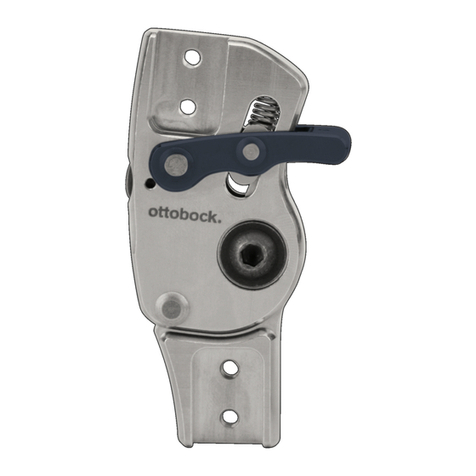
Otto Bock
Otto Bock 17LK3 Series Instructions for use
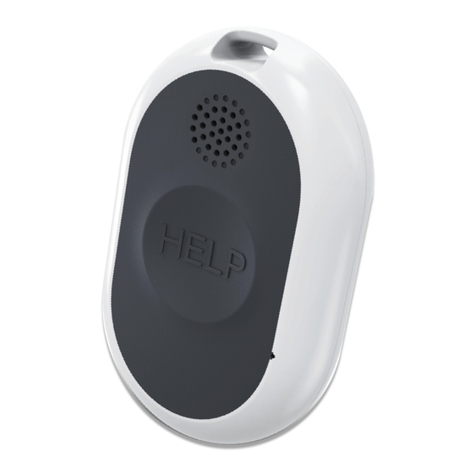
MedGuard
MedGuard On the go Quick setup guide

Kent Scientific
Kent Scientific SurgiSuite user guide
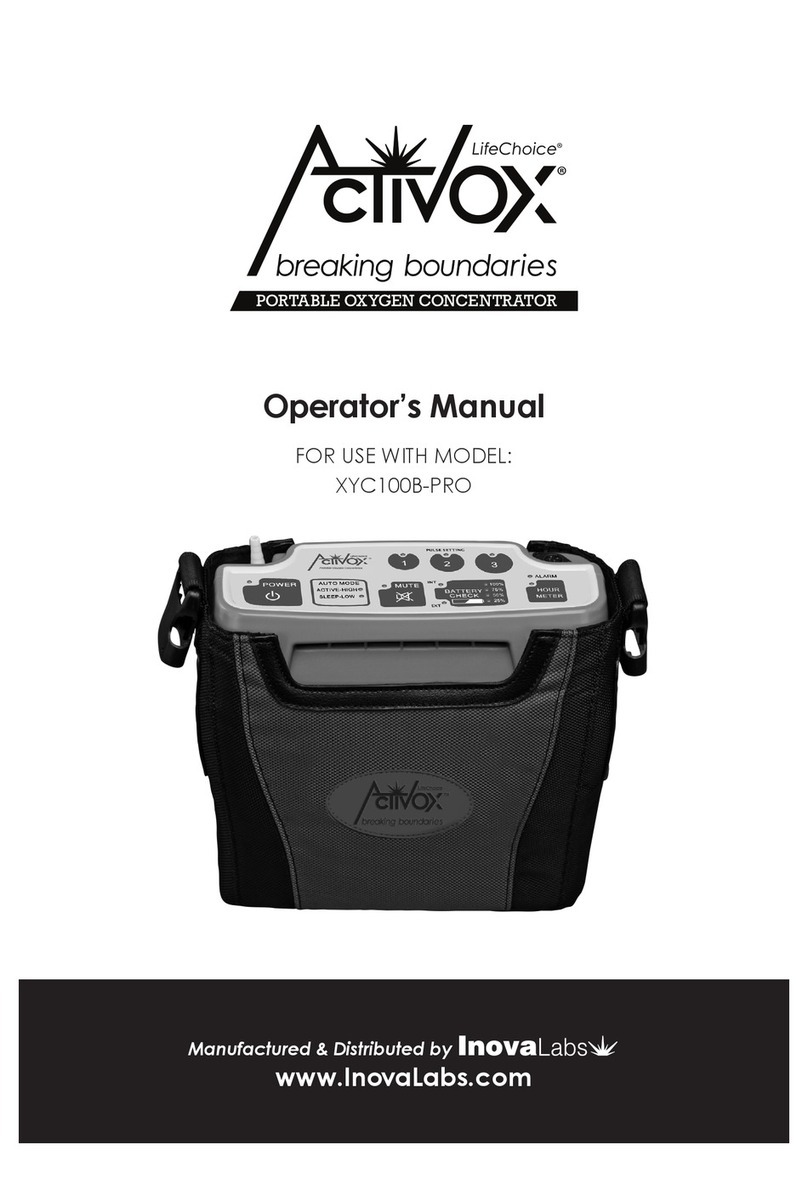
Activox
Activox XYC100B-PRO Operator's manual

Bayer HealthCare
Bayer HealthCare CHIPCO 26019 N manual
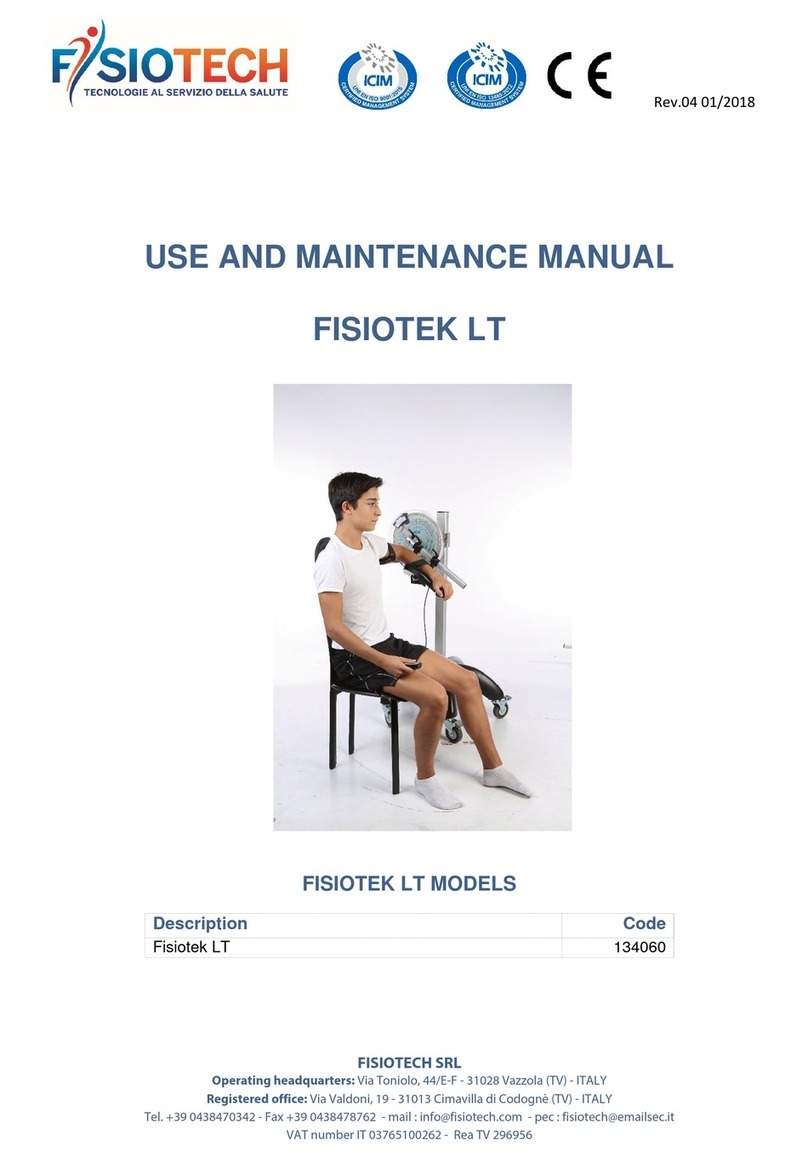
FISIOTECH
FISIOTECH FISIOTEK LT Use and maintenance manual
